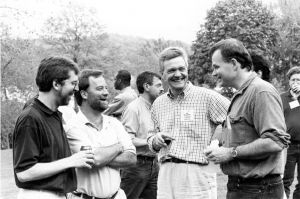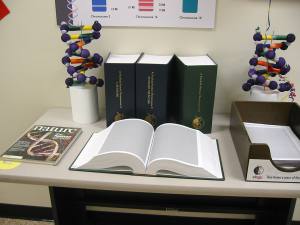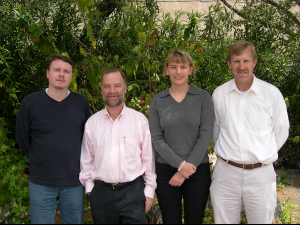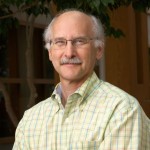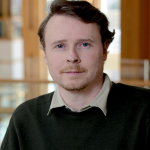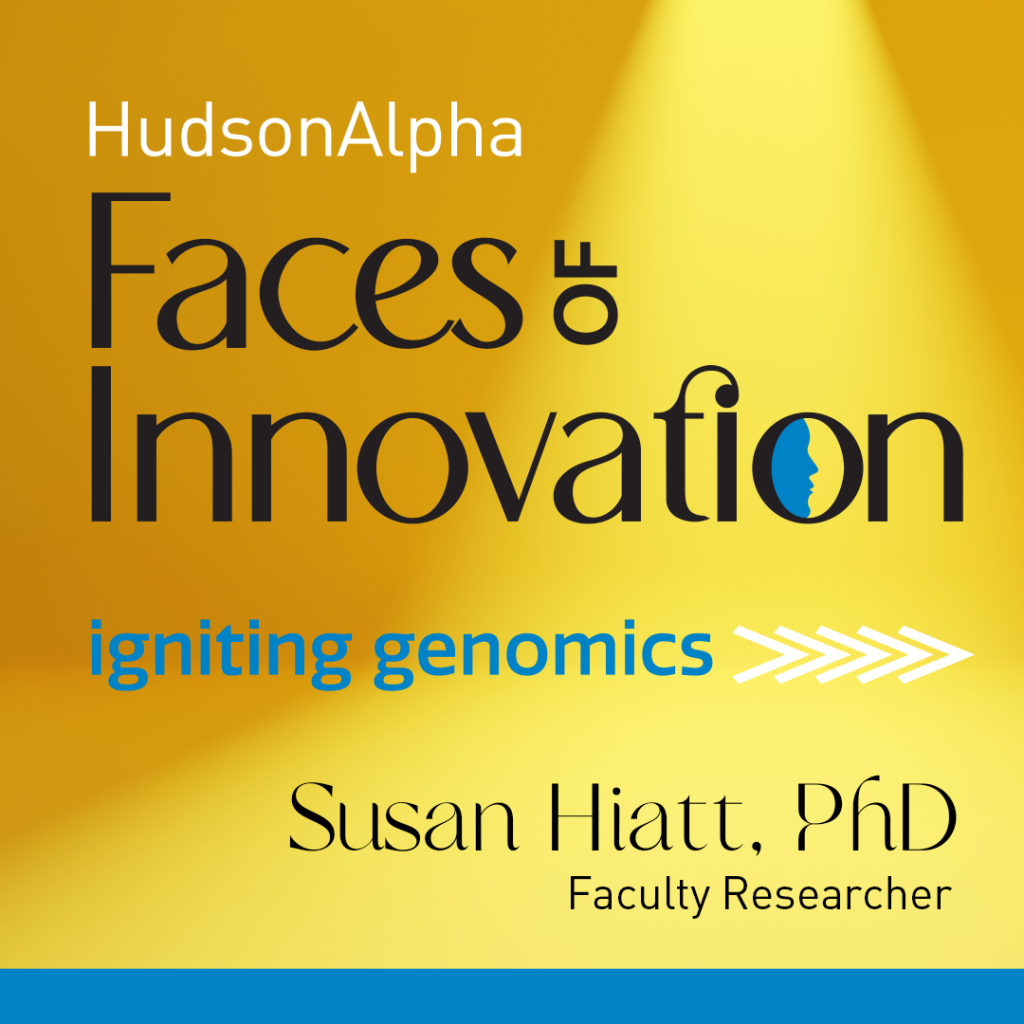Tod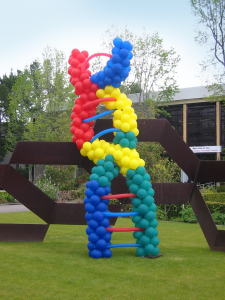 ay, genomic testing is so common it can be initiated from the comfort of your own home. It’s easy to forget that the human genome sequence was first determined less than two decades ago. The monumental task of creating the first human reference genome came from a thirteen-year, international labor of love.
ay, genomic testing is so common it can be initiated from the comfort of your own home. It’s easy to forget that the human genome sequence was first determined less than two decades ago. The monumental task of creating the first human reference genome came from a thirteen-year, international labor of love.
“Thinking about the entire genome at once instead of one gene at a time changed biology forever,” says HudsonAlpha co-founder Jim Hudson.
October 2020 marked the thirty-year anniversary of the inception of the Human Genome Project. Here, we review the monumental accomplishments of the project and hear from HudsonAlpha Faculty Investigators who reflect on the lasting legacy of the Human Genome Project.
Why don’t we sequence the whole genome and find out!
In the mid-1980s, a group of leaders in the human genetics field at a scientific meeting in Alta, Utah were discussing how to determine the rate of mutation in a given person’s DNA. Rick Myers, PhD, President, Science Director and M. A. Loya Chair in Genomics at the HudsonAlpha Institute for Biotechnology, who was then a postdoctoral fellow at Harvard University, was in attendance at the meeting and vividly recalls this discussion because it highlighted the wonder and imagination from which the Human Genome Project was born.
The group concluded that the mutation rates were so low that they would have to sequence the entire human genome to figure it out, a feat which seemed so impossible at the time that the members of the summit laughed together at the idea. However, one year later, the Department of Energy proposed a dedicated human genome project that would change the scientific community forever.
What is the Human Genome Project?
The Human Genome Project was an international, collaborative research effort to sequence the entire human genome and identify human genes. Beginning on October 1, 1990, more than 2,800 researchers at twenty institutions across the United States, the United Kingdom, France, Germany, Japan and China began working on the consortium. It was a collaborative project that would not have been completed as quickly or efficiently had it not been for the participation of so many researchers. The full sequence was completed and published two years ahead of schedule in April 2003.
Sequencing the human genome showed that the 3.1 billion nucleotides in the human genome make up only about 20,000-25,000 human protein-coding genes. In addition to the human genome sequence, the project also sequenced the genomes of several model organisms and developed new technologies to study whole genomes. Whole genome sequencing technology opened the door for sequencing any biological system on the planet, which drastically changed researchers’ ability to gain genomic knowledge and apply it in wise ways.
“We have millions of times more data about the human genome now, and the Human Genome Project made that possible,” says Myers. “We can now explore and learn things much faster and much more thoroughly than we could before. And the quicker you learn something, the quicker you can do something about it.
“For example, Gleevec, the groundbreaking drug used to treat chronic myelogenous leukemia and other cancers, is a notable success in which genomic understanding led to the rapid discovery of a protein responsible for the disease and the consequent development and FDA-approval of a drug to block it,” Myers continues. “This is only one of the many examples of diseases we are now more informed about because of the legacy of the Human Genome Project.”
HudsonAlpha’s connections to the project
Myers led a team at the Stanford Human Genome Center that contributed, along with the Joint Genome Institute in Walnut Creek, California, more than 10 percent of the data in the public Human Genome Project’s efforts to sequence the human genome. Initially, a few scientists, including some very prominent ones, were quite vocal in opposing the concept of the Human Genome Project. Biology research in the public sector had always been done with support for single laboratories, often in great competition with each other, and there was concern from some that having a worldwide, multi-lab project like this would somehow ruin the culture and funding of biology research.
The perseverance and belief in the project by the proposers paid off when several groups, including Myers’, were awarded the first grants for the Human Genome Project in October 1990. It was only a short time later that the great value of the data from the project became obvious, even to most of the naysayers.
HudsonAlpha Faculty Investigators Jane Grimwood, PhD, and Jeremy Schmutz were members of Myers’ team at the Stanford Human Genome Center and contributed greatly to the project. Grimwood, a senior scientist at the time, led a group that was responsible for finishing and performing quality analysis on the 320 million base pairs of human chromosomes 5, 16 and 19.
“I feel very lucky to have been a part of the Human Genome Project,” said Grimwood. “It was arguably the best international collaborative project of our lifetime, and became a catalyst for the genomics revolution that we have been and will continue experiencing.”
Schmutz joined the Sequencing Group at the Stanford Human Genome Center in 1996 to develop the computer programs necessary for large scale DNA sequencing, which helped the Center with their efforts to sequence chromosomes 5, 16 and 19. Schmutz was also part of the group that finished and assembled the human sequence of these chromosomes, and led the quality assessment of the human genome sequence that evaluated the accuracy and completeness of the final human genome sequence.
The Human Genome Project consortium set a time of midnight on April 9, 2003 as the deadline for submitting the data for the finished sequence. Because the Stanford Human Genome Center was the western-most lab participating in the project, Schmutz submitted data for the three chromosomes throughout the day, and submitted the very last data for the whole project by pushing the button for the last chromosome a mere eighteen minutes before the midnight deadline.
“Our team worked endless hours to complete and finish our human chromosomes,” said Schmutz. “I built the final representation of the chromosomes from the underlying sequenced clones and submitted them to NCBI to go into the complete build. After the build, I sent an email to a friend in which I said ‘It remains to be seen what real-world advances will come from the genome, but I’m hopeful for the future.’”
The real-world advances that stemmed from the knowledge and data resulting from the Human Genome Project are innumerable, having profound positive impacts on not only human health and disease but also diverse fields like renewable energy development, food and agriculture, and industrial biotechnology, to name a few.
The legacy of the Human Genome Project
The vision of HudsonAlpha rests on the foundation established by the Human Genome Project. Co-founder Jim Hudson once said that the genomics-focused institute was started based upon the basic question of ‘where are we going to take the sequence and the results of the Human Genome Project now?’ HudsonAlpha was founded, and continues to operate today, upon the goal of moving advancements in genomics to improve the human condition. The Human Genome Project means even more to HudsonAlpha because it was through the project that co-founder Jim Hudson met the future director of the Institute, Rick Myers.
In addition to sequencing a near-complete human genome, the Human Genome Project also had countless other successes which can be measured by its lasting legacies on basic biological discoveries, technological advances, and the culture of research.
– Today, genomics permeates the world, from ancestry to forensics to human health to agriculture.
– The Human Genome Project helped lay the groundwork for discovery-driven science, including important consortium projects like the Encyclopedia of DNA Elements (ENCODE) Project consortium and the Cancer Genome Atlas, both of which HudsonAlpha researchers participated in.
– At HudsonAlpha, genomics is at the core of discovery in human health and disease, agricultural, and basic biological research.
– HudsonAlpha researchers apply genomic technology to uncover the genetic causes of a variety of diseases including cancer, psychiatric disease, neurological disorders, childhood diseases, and autoimmune diseases.
– Researchers at the HudsonAlpha Center for Plant Science and Sustainable Agriculture are applying the techniques of genomic research to plants and agriculture with the ultimate goal of accelerating discoveries in crops and developing new scientific methods that will change the way we grow and use plants in agriculture.
– Since the completion of the Human Genome Project, whole genome sequencing technology has advanced and become more cost effective. As such, the technology can now be more readily applied in basic and clinical research settings.
– HudsonAlpha researchers use whole genome sequencing as a routine part of many research studies.
– As part of The Clinical Sequencing Exploratory Research (CSER) program, HudsonAlpha faculty researchers Myers, Greg Barsh, MD, PhD, Greg Cooper, PhD, Neil Lamb, PhD, Shawn Levy, PhD, and genetic counselor Kelly East, MS, CGC, are working with physicians, scientists and genetic counselors at partner institutions to sequence the genomes and exomes of hundreds of North Alabama children and their families.
– HudsonAlpha is also a part of the SouthSeq project which is an NIH-funded research study looking at how whole genome sequencing can be used to try to find the reason for medical problems among newborns in a neonatal intensive care unit (NICU).
– A major hallmark of the Human Genome Project was the rapid, free release of data.
-This was very important to those involved in the project because it allowed others to start using the genome data immediately without having to wait thirteen years for the final publication.
– Grimwood and Schmutz are still firm supporters of rapid, free sharing of scientific discoveries. At the HudsonAlpha Genome Sequencing Center, of which the two are co-directors, they sequence and make publicly available de novo genomes which leads to discovery in plant sciences.
– The Human Genome Project also paved the way for consortium-based research projects, several of which HudsonAlpha researchers have been involved in over the years.
– The Myers Lab has been a member of the Encyclopedia of DNA Elements (ENCODE) Project consortium for nearly two decades. As a follow-up to the Human Genome Project, ENCODE is a worldwide effort to understand how the human genome functions.
How has the Human Genome Project influenced or changed your research?
HudsonAlpha Faculty Investigators reflect on the lasting legacy of the Human Genome Project.
 “When I think of the Human Genome Project, I think of the Cold Spring Harbor Labs Genome meetings. The friends I made at the CSHL Genome meetings are the best ever, period. The meetings lasted 10 to 12 hours a day for three and half days. Breakfast before and drinks in the lab’s bar afterwards made for 20 hours a day of pure science and friendship. Being a part of the human genome project was the most exciting and life changing endeavor of my life.”
“When I think of the Human Genome Project, I think of the Cold Spring Harbor Labs Genome meetings. The friends I made at the CSHL Genome meetings are the best ever, period. The meetings lasted 10 to 12 hours a day for three and half days. Breakfast before and drinks in the lab’s bar afterwards made for 20 hours a day of pure science and friendship. Being a part of the human genome project was the most exciting and life changing endeavor of my life.”
“The culture of biology research was profoundly changed by the Human Genome Project because it demonstrated that amazing discoveries can be rapidly made through international, collaborative projects. The great increase in collaboration and public data sharing, combined with the vast amount of genomics data that can be quickly generated, allows us to create new, discovery-driven hypotheses that would not have been possible before the Human Genome Project. This has had a huge impact on my own research, and that of many thousands of researchers worldwide.”
 “Today we not only use genomics for diagnosis, but for early detection of disease and to guide therapy and treatment. Being able to analyze a person’s genetic data to determine their disease risk, or know which medication will work best is possible because of the innovative idea to sequence the human genome.”
“Today we not only use genomics for diagnosis, but for early detection of disease and to guide therapy and treatment. Being able to analyze a person’s genetic data to determine their disease risk, or know which medication will work best is possible because of the innovative idea to sequence the human genome.”
“It is truly amazing that we’re able to bring whole genome sequencing into the practice of medicine and that would not be possible without the completion of the Human Genome Project. We’re able to use the information from this project to identify and understand the underlying causes of rare, and difficult to diagnose diseases.”
“The technology and knowledge gained from the Human Genome Project had far reaching effects outside of human health and disease. The plant and agricultural science communities have benefited greatly from the improvements to genome sequencing technology- for example, we now have complete genomes of hundreds of plants that help us understand gene function that can be used to drive crop breeding and improvement efforts.”

